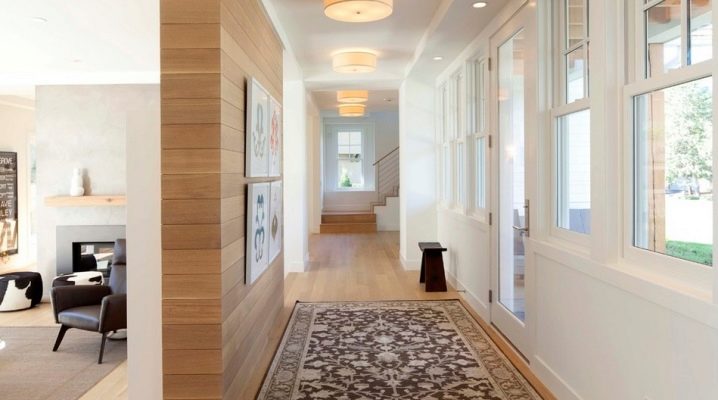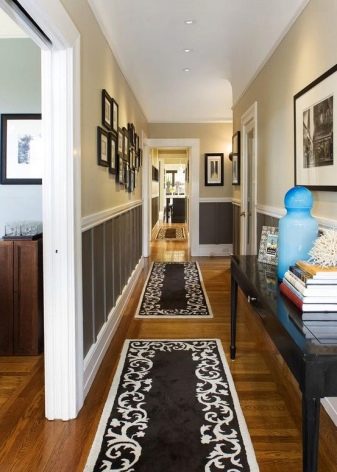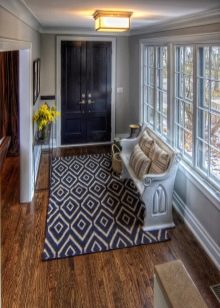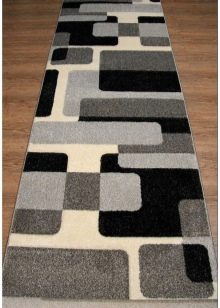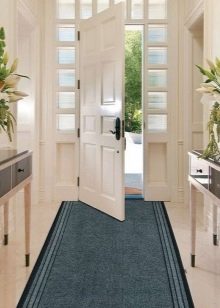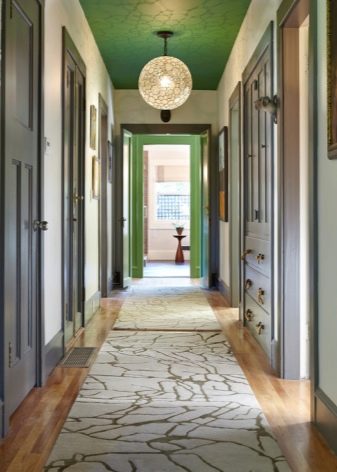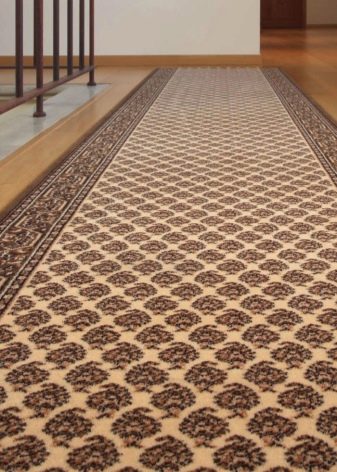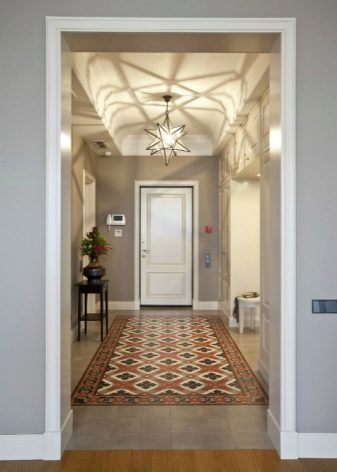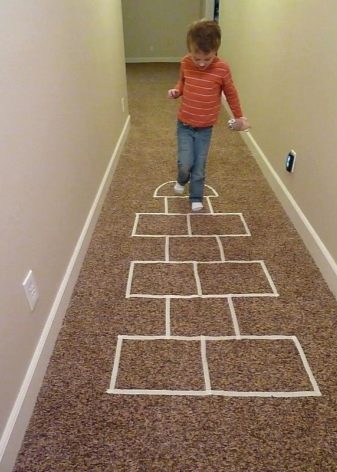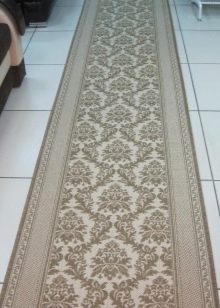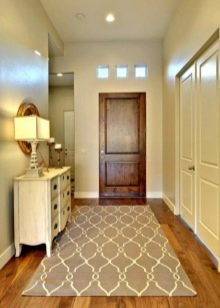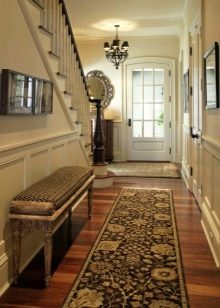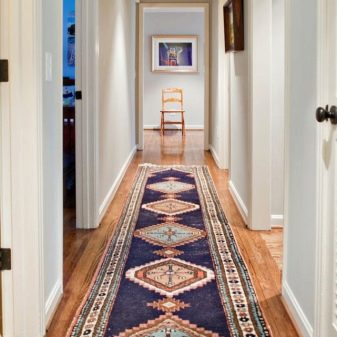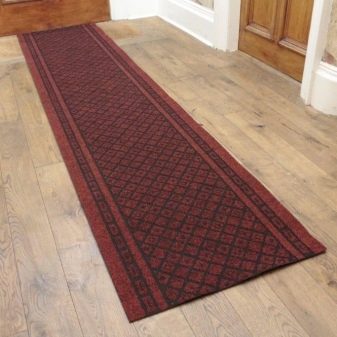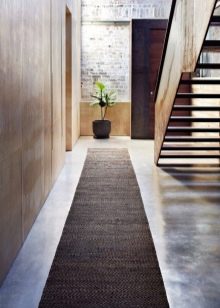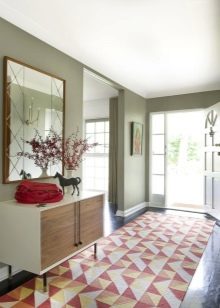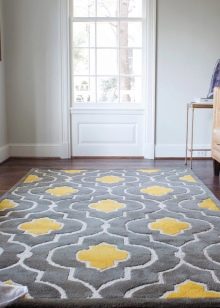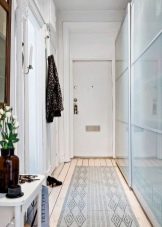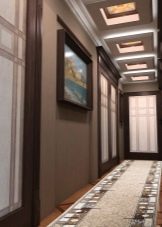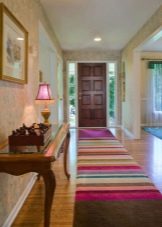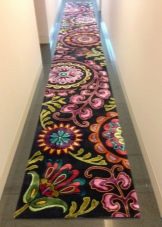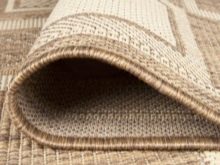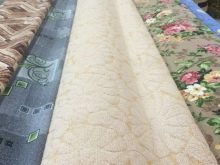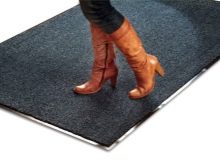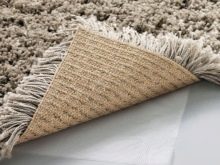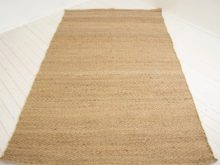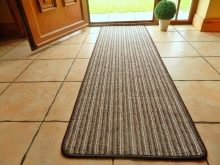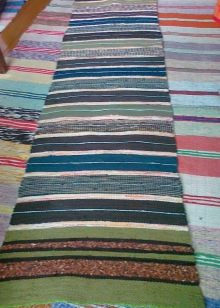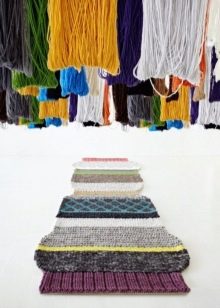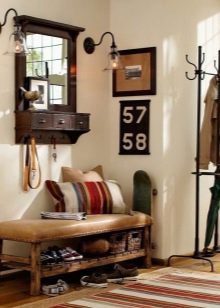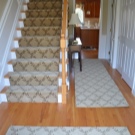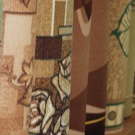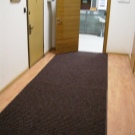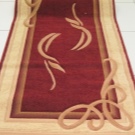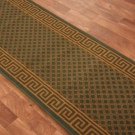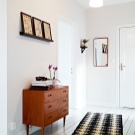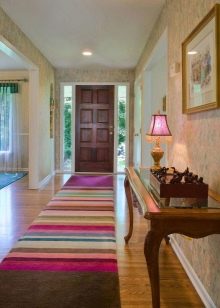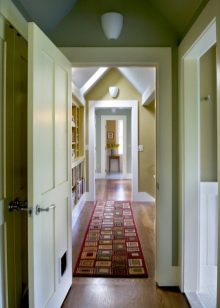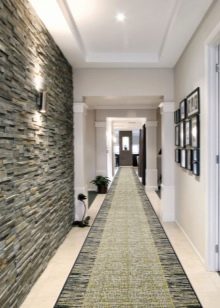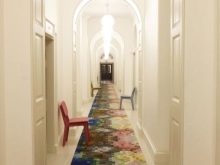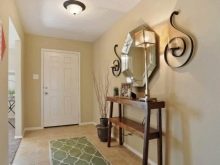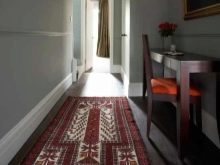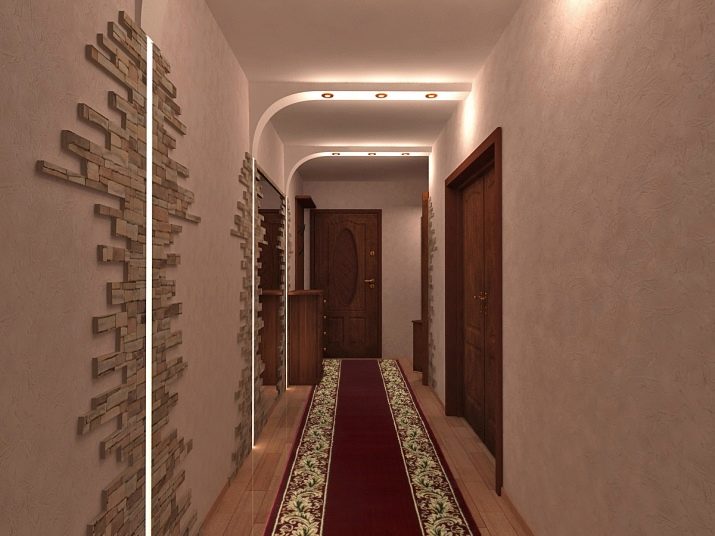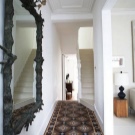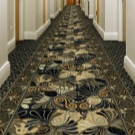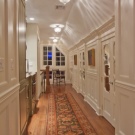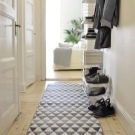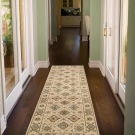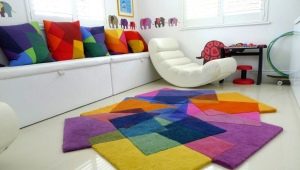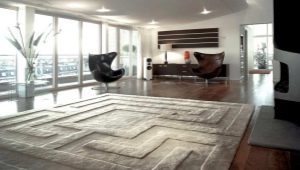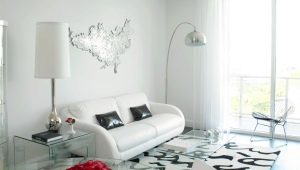Carpet in the hallway
Nothing will not tell about the owners of the apartment, as its design. The first thing that catches the eye and often leaves a lasting impression is the design of the hallway. It is impossible to imagine it without soft paths that protect the floor from dirt, dust and mechanical damage. However, few people know that the carpet in the hall require a special choice, having a number of differences from conventional carpets.
Functions
The carpets are not only functional floor accessories. They ennoble the interior of the hallway, create an atmosphere of home comfort and perform several tasks:
- make the floor surface warm;
- with the right choice of color and width, they visually increase the hallway space;
- they are an unobtrusive accent of style, harmoniously connecting individual interior items through color, pattern, texture;
- change the "temperature" of the room, making the general background having and adjusting to the desired mode.
Special features
Carpets in the hallway - a separate line of narrow width carpets. They are made on a different basis, but unlike classic carpets, they are not zone mats, therefore they are purchased taking into account the total area or its length. An important nuance: the carpets and carpet mats at the door are different floor coverings with different functionality.
Walkways for the hallway are not designed to collect dust and dirt - it is the task of the door mats.
Such products are unique and have a number of features and advantages. They:
- made from modern raw materials of natural and synthetic origin;
- differ in length and width, if desired closing a large area of space;
- detains dust, sand and moisture, missed after the door mat, not allowing it to spread further;
- depending on the type of fibers and their composition, they can have water-repellent impregnation and protection from dirt, which prolongs the appearance of the appearance and wear resistance;
- are carried out in a mass way on automated equipment or manually at home with the help of available tools;
- have a colorful color palette that allows you to enter the coating as well as possible, without interrupting the general idea of the design;
- They look good in the corridor and, depending on the layout of the dwelling, can be a connecting element in the design of two rooms (for example, a hall and a living room, a hall and a kitchen);
- based on the structure of the fibers, they can have different heights and densities of the pile, choosing according to the shape and structure of the available interior items;
- unlike traditional carpets, they do not have a complete pattern or plot;
- in most cases, they have clear and strict lines, can be with the effect of aging, fit to a different style of the room.
- carpet paths in the hallway are of democratic value.
Because of this, they can be changed more often than carpets in the rooms, based on the layout of the room, laying on the center or against the wall.
Minuses
Alas, the carpet can not be called practical floor coverings. In spite of the fact that they are produced for the high traffic area, in most cases they quickly lose their original appearance and require frequent cleaning, collecting dust, sand and moisture.
Unfortunately, not all types of tracks are suitable for a hallway. Since the pile can make cleaning difficult, it should be of minimal length, which looks somewhat rustic against the general background and can spoil an elite room design. When buying models with longer length, they look beautiful only at the beginning of operation, very quickly demonstrating the most passable zones, forming a pile of nap and its untidy.
Purchase of such products should be thorough and taking into account all the nuances of operation.
Patterns and color
Carpet tracks in most cases have a pattern: a bright border edging in the form of stripes, geometric, vegetable prints, classic carpet patterns. Of course, the choice can not be called particularly diverse, but more often the range allows you to choose an option based on the color matching.
The color palette of carpets varied. Creepy options for combining red with black are gone: The focus is on natural tones, soft contrasts and muted saturation. Favorite shades of the season are products made in sand, gray, contrasts burgundy, brown and beige, olive, orange, blue and beige.
The game of contrasts and colorful pattern can extend the life.
Some models perform in rainbow tones, dividing the track into fragments. Others adhere to the classics, the Italian direction of design, and still others give it up in the spirit of Soviet times. Conventionally, all types of coatings can be divided into three categories:
- classic - models with a single-colored middle, bordered by colorful patterns along the edges;
- Kremlin - traditional products, the canvas area of which is completely filled with a pattern (both the middle and the edges);
- Art Nouveau - modern tracks in the form of a whole canvas without borders, edges that have a pattern in the form of a material texture (monophonic or fragmentary models).
In addition to the usual form, today you can buy tracks with a figured edge - exclusive products made by hand.
The foundation
The tracks are made in needling, typing and weaving. Basis - an important component of the carpet. Usually it is quite dense and is executed from:
- jute;
- felt;
- rubber.
When buying, experts recommend paying great attention not only to the pile, but also to the base, because if it is loose and of poor quality, the path will quickly become worthless, losing the hair, day after day.
The ideal option for the carpet for the hallway is considered rubber based product. Compared with their counterparts, rubber base perfectly protects the surface of the floor covering from dirt and moisture, although such models are limited in design.
Floor walkways on jute or felt basis more varied in color and do not always have clearly defined borders of the lateral sides, visually reducing the hallway space. The structure of these models is quite dense, they have excellent sound insulation and thermal conductivity. Felt-based models are not afraid of wet cleaning, this base perfectly repels dust. Jute mats do not accept wet care, as this can cause peeling of the material and the appearance of mold. And since the structure itself is sufficiently rigid, it can damage the surface of the floor covering.
Simply put, rubber-based carpets on the floor are more practical, cheaper, but in most cases boring. Options from natural material on felt or jute are more expensive, more presentable, but not practical.
Homespun and knitted patterns
As practice shows, the tracksHomes created on a weaving machine according to the technology of production analogues have great practicality and stand out in terms of performance against the background of mass analogues. Belgian mat, matting, created by the hands of skilled craftswomen, look quite stylish, although they are much more expensive than purchased products. For this reason, models created with their own hands came into use. And in most cases these are not simple knitted mats on the principle of knitting a scarf: These are unique creative coatings that set the tone for the interior.
They can be strictly functional or performed as an additional interior touch, be simple or pretentious in style, be supplemented with fringe, finishing cord or other decorative elements (relevant for home-made products).
Materials
Basically, the carpets are made of natural wool, cotton, polyamide, vinyl with a nap and polypropylene. Each type of raw material has strengths and weaknesses, differs in different resistance to deformation, the effects of various kinds of microorganisms. The minus of all materials is the probability of tarnishing under the sun (relevant for hallways, flooded with the sun).
Wool used in the production of tracks, is environmentally friendly, able to retain heat (has a low thermal conductivity). However, in most cases, such products are difficult to maintain and respond to every touch of cleaning agents, changing the structure of the material.
Compared with synthetics, this material can cause an allergic reaction, regardless of its location in the house.
Recommendations for selection
When buying a carpet in the hallway, it is worth considering a number of nuances: the duration of service life, protection of the floor surface from abrasion, ease of maintenance depends on this.
The main rule of choice is the density of the flooring. The higher it is, the better and more durable the track. This figure can be checked by scanning: if the base has no gaps, the pile is dense, then the carpet is of high quality.
This can also be judged by the large number of nodules on the reverse side.
And finally, it is worth considering a few tips that will help get what you need:
- the color of the carpet should be not only appropriate, but also practical;
- You should not invest a large amount in the product: such products change more often than usual carpets (except for the bedroom path);
- if it is difficult to resist buying a long-haired model, it is better to look at the coarse-fiber version (they are more resistant to cleaning);
- You should not choose a product that abounds in ornaments: this will simplify the overall look of the hallway;
- the colors in the small stripes are rippling in the eyes, so they risk quickly becoming an annoying piece of furniture;
- if the hallway has a lot of bright objects, the print of the product should be calm, if possible without variegation;
- if the room is dark, you should avoid cold and gray shades;
- the best material for the hallway, which will not be capricious in the care, is synthetic;
- if the style of the rooms allows, you can buy several tracks, thereby creating a set of them, extending the floor decoration from the hallway to the bedroom, living room or nursery;
- if there is a pet in the house, you should not buy a model with a large pile: removing wool from the surface of such a product is very problematic;
- thin knitted models for the hallway are not suitable: they will constantly gather in a heap;
- if you want to decorate the room with a handmade product, its base should be rough.
You will learn more about carpet tracks in the following video.
